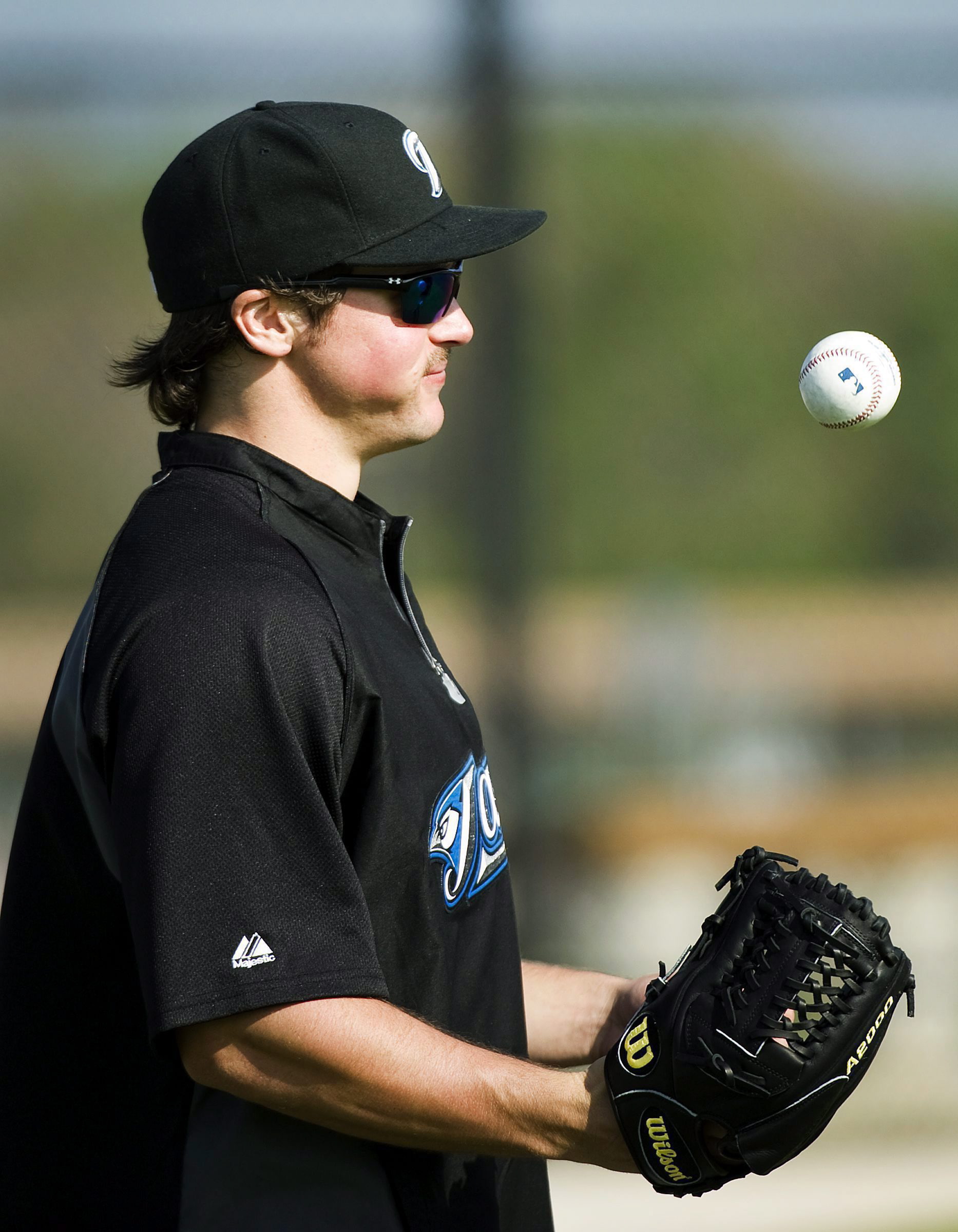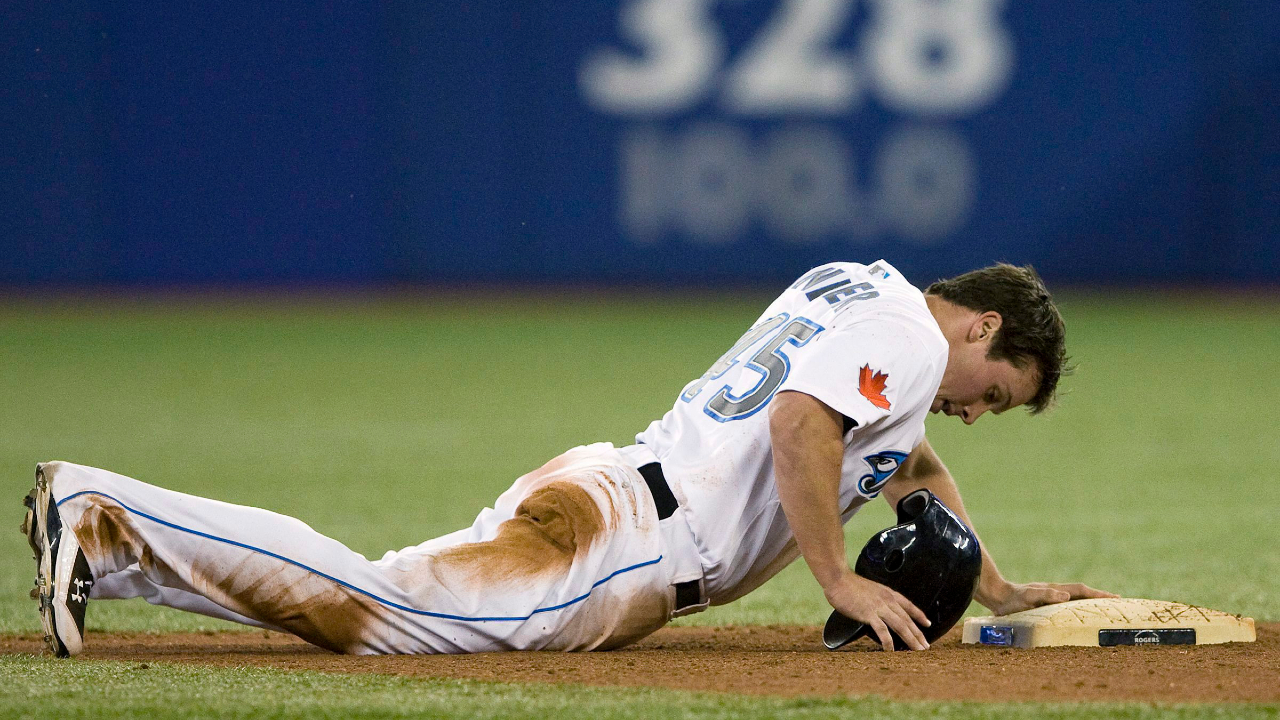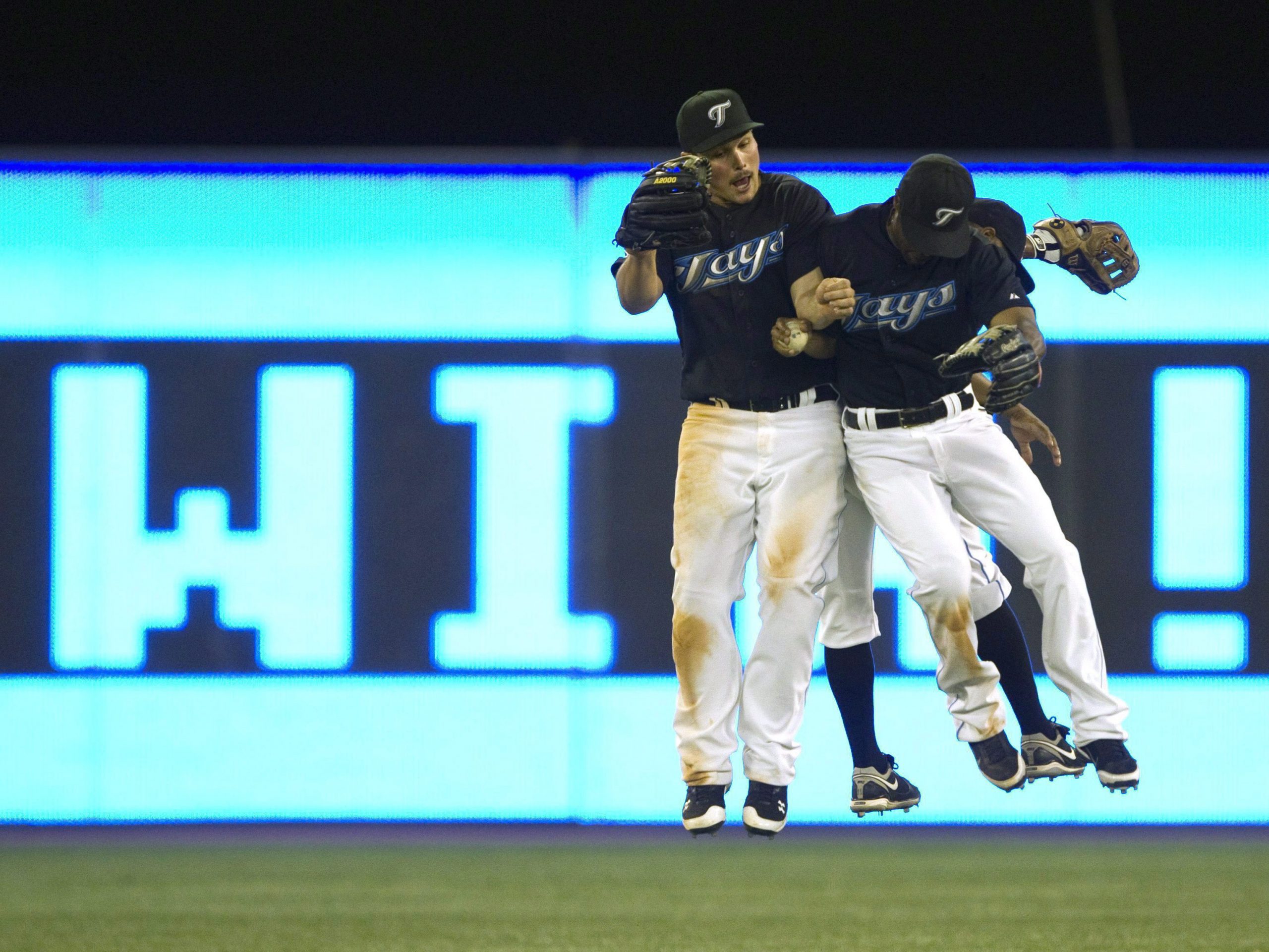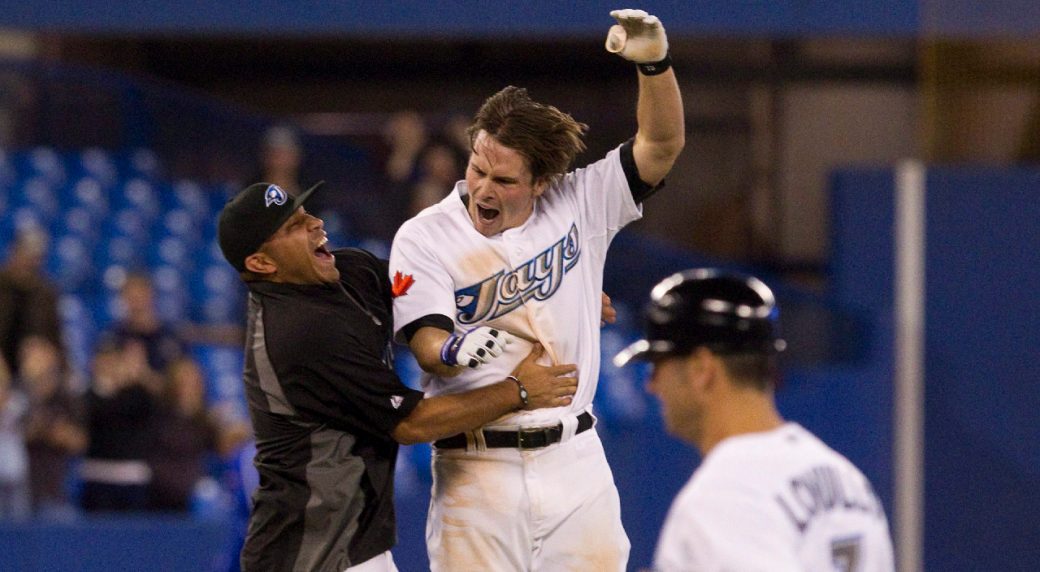TORONTO – As August turned into September and the final weeks of the 2021 triple-A season loomed, Travis Snider did some thinking and picked up his phone. The fire that had driven him through 16 seasons of pro ball, that had once made him one of the sport’s top prospects, that had persisted even as the game cruelly chewed him up, was out.
He had enjoyed playing for the Gwinnett Stripers, Atlanta’s affiliate, and loved manager Matt Tuiasosopo, someone he’d long admired, but sporadic at-bats and poor results had sapped what was left of his will. A couple months earlier, his wife Isabel had given birth to their third child, a daughter, and the baseball life is especially hard on families, particularly amid the pandemic. He just wanted to be at home with them.
So he called Alex Anthopoulos, Atlanta’s president of baseball operations and GM, and Ben Sestanovich, the assistant GM, player development, and asked for his release, which they granted. He wasn’t certain then if the double-play grounder to second he hit in the fifth inning Sept. 5 against visiting Memphis was going to be his last at-bat, but he was OK if it was.
“The game wasn’t the same for me,” says Snider. “I didn’t have the same fire, I didn’t have the same passion. … Going into the off season, 60-40 I was going to retire unless something crazy happens. But I wanted to see how my body, my energy flowed. I just never got it. … I realized I just didn't have the passion to keep fighting, and that was something that had kind of defined my career since the first time that I got sent down in 2009. For better or for worse.”
Word of his retirement dropped in a Jan. 13 Instagram post and closed the book on a career that didn’t meet the unfair expectations placed upon it, but was rewarding for Snider and meaningful for the industry in so many other ways. Beyond the stat lines and the memories, the 34-year-old walks away with a perspective that only perseverance through adversity can provide, with lessons for every player-development department to draw from.

Travis Snider plays with a baseball during baseball spring training in Dunedin, Fla., on Monday, Feb. 21, 2011. (Nathan Denette/CP)
Poised to seize all the trappings a career in the majors offers, Snider faced down the game’s callous underbelly, along with the personal foibles it can ruthlessly expose. As much as he had to work on his game, Snider also had to work on himself, his journey forcing him to become a young man with an old soul.
And while he’s uncertain of what the future holds for him, he is grateful to all who poured into him at his various stops and would like to eventually coach in some capacity as a way to pay his learning forward.
“With all the ups and downs and the injuries and the trades and the designations, I'm thankful because it's what's preparing me for these next 30, 50, 70 years, however long I've got,” says Snider. “These last seven years, especially, have humbled me in a way that spending 10 years in the big-leagues and making $100 million never would have. And that's what I thought I was going to do. I'm grateful now looking back on this. I feel like I have a better chance at life after baseball because of what I experienced and those failures that I had to grind through.”
Life and circumstance threw a lot at Snider from a young age and the challenges never really stopped during his 16 years in the game. He was chosen by the Toronto Blue Jays 14th overall in 2006, a teenager still reconciling the grief and anger over the deaths of his mom and two grandparents in rapid succession, yet so talented that evaluator after evaluator labelled him a can’t-miss cornerstone with plus grades for his mental makeup.
On Aug. 29, 2008, slightly more than two years after he was drafted, Snider debuted at Yankee Stadium, ripping a double off Carl Pavano in three at-bats in a 2-1 loss. He hit .301/.338/.466 during a 24-game sample to close out that season and then clubbed a pair of homers the following April 13 at Minnesota to extend a hot start to the next, but soon hit a wall and for the first time in his life, struggled on a baseball field.
A late May demotion to triple-A was supposed to be a breather to get him right. It became a demon he never managed to slay.
“I was ready to play in the big-leagues. I was not ready to get sent down from the big-leagues. And when that happened, that took a piece of my confidence that I never got back,” Snider concedes. “As my career progressed, I battled playing not to get sent down, which in any mental skills lesson you ever have in your life, you prepare for the worst but you're always pushing towards the best. I was literally playing most of my career in Toronto worrying about getting sent down if I had a bad game. Then a bad game led to three bad games.
“You start reading articles, you start buying into storylines, you start fluffing your ego when you're having a good first two months in The Show,” he continues. “You start thinking about how much money you're going to make and how many all-star games you're going to play in. Then a month later, you go 5-for-40 or whatever and they send you back to triple-A. It was like everything that I had worked for in my life got taken away from me and was no longer secure.”

Travis Sniderlooks down after being forced out on the double play at second base to end the inning against the Seattle Mariners during seventh inning AL action in Toronto on Wednesday, September 22, 2010. (Nathan Denette/CP)
For someone who had used his success on the field as an insulation from emotional turmoil, that first instance of doubt was especially jarring. For the next three years he bounced back and forth between the minors and majors until he was called off the field during a July 30, 2012 game at Seattle and sent to the Pittsburgh Pirates for reliever Brad Lincoln.
He enjoyed two years of stability in a part-time role with the Pirates in 2013 and 2014, the only seasons in which he went wire-to-wire in the big-leagues. But he was traded to the Baltimore Orioles in 2015, signed to a minor-league deal with the Kansas City Royals in 2016, split time at triple-A with Texas and the Mets in 2017 and was then relegated to independent ball in 2018, when no big-league club wanted him.
Snider joined the Long Island Ducks of the Atlantic League, determined to work his way back into affiliated ball, and as he put up solid numbers — batting .290/.374/.463 in 94 games — figured some team would soon come calling. But when Elliott Hull, his brother-in-law, was diagnosed with melanoma and took a turn for the worse, Snider left to be by his side, thinking an Aug. 15 game with the Ducks was going to be his last as a pro.
Watching Hull, his sister’s husband and father to their two-year-old son, die at 36 changed all that.
“It was traumatic,” says Snider. “But through that, I was able to find some perspective and some energy that I didn't know I had. I just watched this guy who was a brother to me pass away – I'm not going to take this for granted. If I have an opportunity to play, I will play.”
The Arizona Diamondbacks ended up providing him that opportunity.

Travis Snider (left), Eric Thames (right) and Rajai Davis (back) celebrate after defeating the New York Yankees 16-7 in AL action in Toronto on Thursday July 14, 2011. (Frank Gunn/CP)
Having fought through poor attitudes during previous seasons, particularly during 2016 with triple-A Omaha in the Royals system and in 2017 with Las Vegas after an expected call-up to the Mets fell through, he was nothing but positive. He opened the year at triple-A Reno, started out hot, ended up with an .899 OPS in 93 games and, while he didn’t get back to the majors, he showed enough that the Diamondbacks re-signed him.
It felt like progress and in the spring of 2020 he was getting a real look when COVID-19 hit and shut down the continent. Once it became clear that the minor-league season would be cancelled, the Diamondbacks released him, which eventually led him to the Miami Marlins’ alternate site, but again no promotion, even after a COVID outbreak decimated the big-league roster.
They released him that September and, during the off-season, Anthopoulos made a surprise call with an offer of a minor-league deal. There were no promises, and Snider went into it thinking, “whatever happens, happens, I’m going with the flow and trusting the process.”
A .174/.305/.304 batting line in 63 games followed, prompting the decision to step away, at peace with his career and himself so, “I'm not walking around with a big hole inside of me because I felt like I got screwed or I felt like I didn't live up to my potential.”
“I know I poured everything I had into it and made a lot of mistakes along the way, but just found a way to keep getting up,” adds Snider, who counts his two post-season runs with the Pirates and early days with the Blue Jays among his fondest memories. “Those years in Toronto, looking back on this, I realize what the organization was trying to do and the way that I received it and the ways I could have handled it better. I've shared those stories with teammates over the years.
"There's a lot of pride I take in continuing to fight. And even though my goal of getting back to the big leagues was not achieved, the amount of growth, the amount of reflection, the amount of tough conversations that I have had to have with myself starting to just pull back the layers on this onion that I’ve created around my career as a baseball player, that's hardened me in a positive way for these obstacles to come.”

